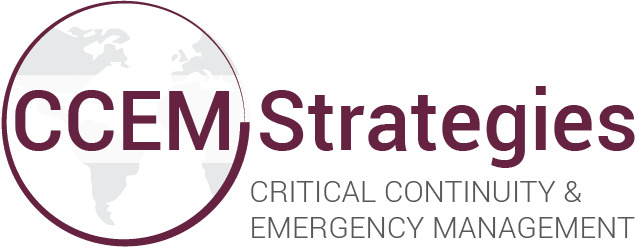Will your business be prepared in the event of a major earthquake? CCEM Strategies has some easy and effective steps to help to mitigate the destructive impacts an earthquake may have on your business.
KNOWING THESE EARTHQUAKE MYTHS MAY HELP KEEP YOU SAFE
PREPARING COASTAL BUSINESSES FOR THE BIG 3 — #1 TSUNAMI’S
Coastal towns are a popular tourist destination due to the picture-perfect views and stunning fiery sunsets over the ocean. Poseidon, the great Olympian god of the sea, rivers, floods and earthquakes, highlights the need to be prepared. After all, there are certain consequences faced when operating a business within the vicinity of such beauty and you never know when the earth may start to shake or the water and waves will rise. A disaster as tragic as any Greek myth may happen at any time – are you ready to combat the great Poseidon when the time comes?
SHAKEOUTBC: TIPS TO PREPARE YOUR WORKFORCE FOR AN EARTHQUAKE
HOW TO LEAD YOUR ORGANIZATION BETWEEN PANDEMIC WAVES
PLANNING FOR AN EMERGENCY? DON'T FORGET YOUR VOLUNTEERS
At the annual Clean Pacific conference last week in Portland, OR, we attended a session on volunteer planning in oil spill response. The presentation focused on the different types of volunteers that can emerge during an oil spill (affiliated, spontaneous and micro), and how they can be integrated into response planning.
EMERGENCY PREPAREDNESS SQUAD: ARE YOUR STUDENTS PREPARED?
PET PREPAREDNESS: HOW TO PREPARE YOUR PET FOR EMERGENCIES
EMERGENCY PREPAREDNESS: TECHNOLOGY TIPS
Technology is becoming prevalent now more than ever - we rely heavily on it to communicate with everyone around us, use it to read breaking news, and are alerted in the event of an emergency with Alert Ready. But in the event of an emergency, how should you be using your technology to reap the benefits?
ALERT READY: TIPS TO PREPARE YOUR BUSINESS FOR THE NATIONAL PUBLIC ALERTING SYSTEM
Now that the Canadian government has launched Alert Ready - Canada’s National Public Alerting System, it’s important to consider how this affects your business’ emergency plans, and how to modify them moving forward.
PREPARING YOUR ORGANIZATION FOR CONVERGENT VOLUNTEERS
Convergent Volunteers are those members of the community who come forward without having been previously affiliated, prepared, or trained by the specific organizations in which they are supporting. Regulators, recognizing this trend, are starting to request that the operators of some critical infrastructure, like pipelines, have convergent volunteer management plans in place. So, how do you get ahead and prepare your business for the volunteer wave?
BUSINESSES ARE LIKE DOMINOS. DEVELOP YOUR BUSINESS CONTINUITY PLAN BEFORE THEY START TO FALL.
Businesses are like a standing line of dominos. People, facilities, and technology all interacting to produce the goods and services for your customers. At any point though, an emergency can interrupt that flow and set a chain reaction similar to that of dominos falling. Check this article for tips to ensure all your dominos are still standing following an emergency.
LOCKDOWN VS. SHELTER-IN-PLACE – DETERMINING THE BEST ACTION FOR YOUR BUSINESS
There is an emergency. You’ve deemed the safest action is to stay indoors, rather than to evacuate. Now, do you Lockdown or Shelter-in-Place?
In our final part of the Shelter-in-Place & Lockdown 3-part Blog Series, we explore some quick tips to determine the most appropriate actions for the situation and how to keep your employees safe.
Download the free Infographic to help your business get started.
THE LOCKDOWN PROCESS — PREPARING YOUR BUSINESS FOR SUCCESS
Threats to your business and employees can come through a variety of means, including violence. When a violent situation occurs, our instincts alert us to get as far away as possible. But sometimes, evacuating the workplace exposes you and your employees to greater danger than simply staying in place and hiding under a table.
This article will explore Lockdown procedures to help you support your personnel and ensure the safest Lockdown approach. This is the 2nd article of our 3-part blog series on Lockdown and Shelter-in-Place.
SHELTERING-IN-PLACE — IS YOUR BUSINESS PREPARED?
As a business, ensuring your best assets — your employees — remain safe is critical. Knowing when and how to Shelter-in-Place can prevent employees from evacuating within the vicinity of something more dangerous.
Shelter-in-Place is different from Lockdown. Shelter-in-Place addresses environmental threats, while Lockdown refers to the safety measures taken to protect from violence.
Global BC Interview with CCEM Director Christine Trefanenko
This morning we visited the Global BC studios where CCEM Director Christine Trefanenko sat down with anchor Sonia Sunger to discuss how businesses can prepare for emergencies such as the salt crisis that Vancouverites are experiencing right now. Click to watch the full interview and check out Christine's tips on keeping your business resilient.
The Vancouver #SaltCrisis 2017
It’s #Saltmageddon out there! The extended winter weather in the Lower Mainland has created significant ice and a #SaltCrisis in the city of Vancouver. With abnormal snowfall and unexpected weather on the coast (and across Canada), how can we be better prepared? Know your business. Know your risks. Know your plan.
EMERGENCY PLANNING FOR SCHOOLS
PREPARE. RESPOND. RECOVER. HOW DOES YOUR ORGANIZATION MEASURE UP?
CSA Z1600: FEEDBACK REQUIRED FOR CANADA'S EMERGENCY AND CONTINUITY MANAGEMENT STANDARD
As evacuees from the Fort McMurray wildfire return to their homes and community recovery continues, we are visibly reminded of the importance of planning for emergencies. In British Columbia, as part of the province’s efforts in preparing for an impending earthquake, Exercise Coastal Response, Western Canada’s largest earthquake and tsunami response exercise, was held last week from June 7 to 10, 2016. To organize and execute response, recovery and verification events, it is important to obtain guidance from a standard that presents best practice in emergency and business continuity management. One such standard is CSA Z1600 Emergency and continuity management program.




















